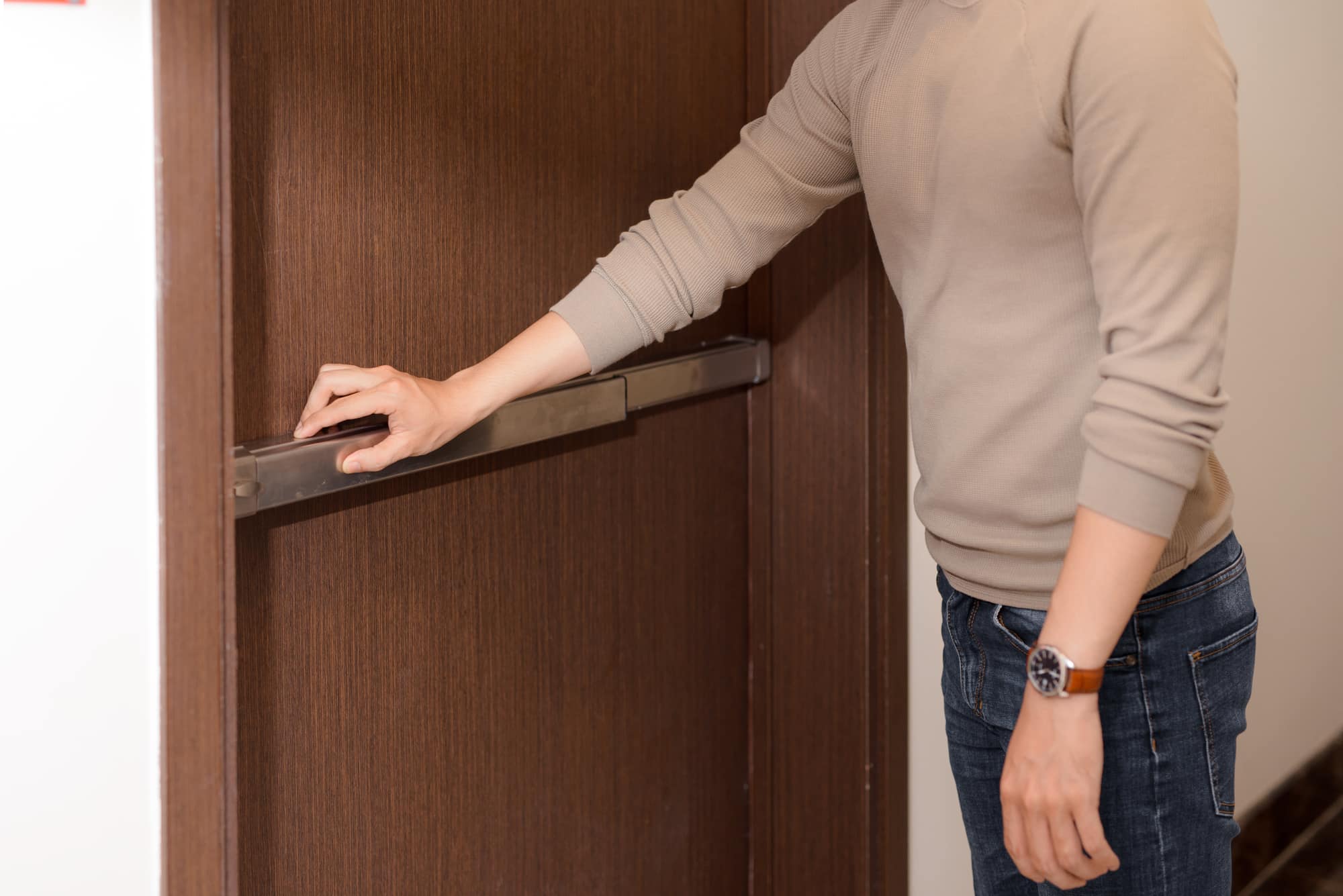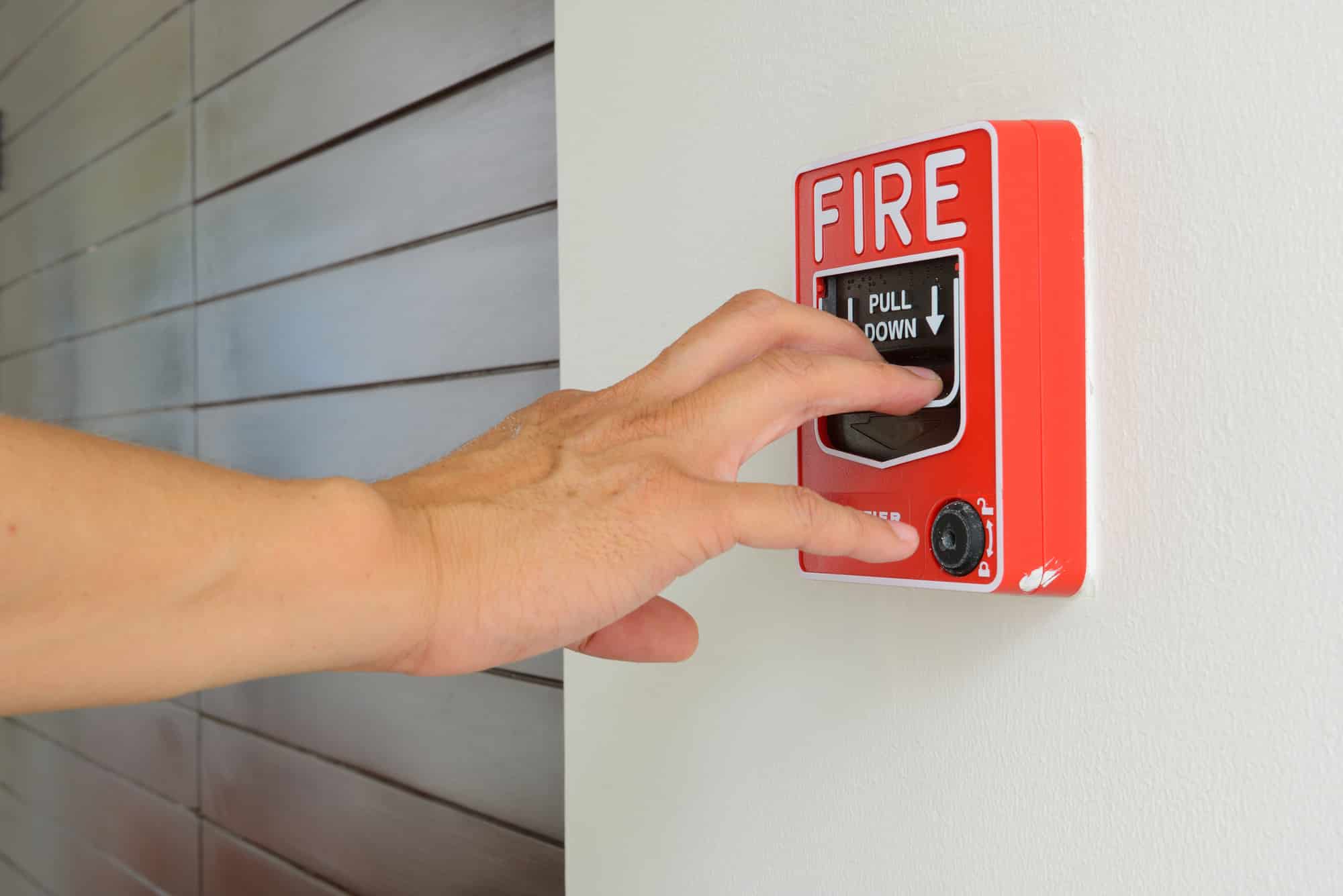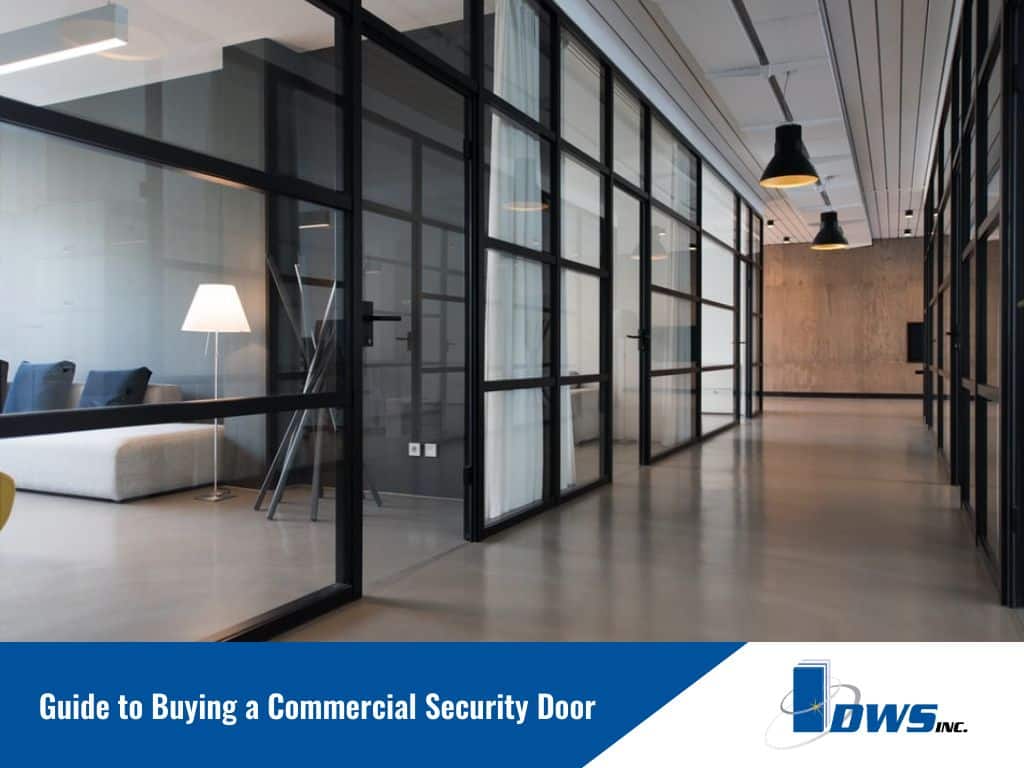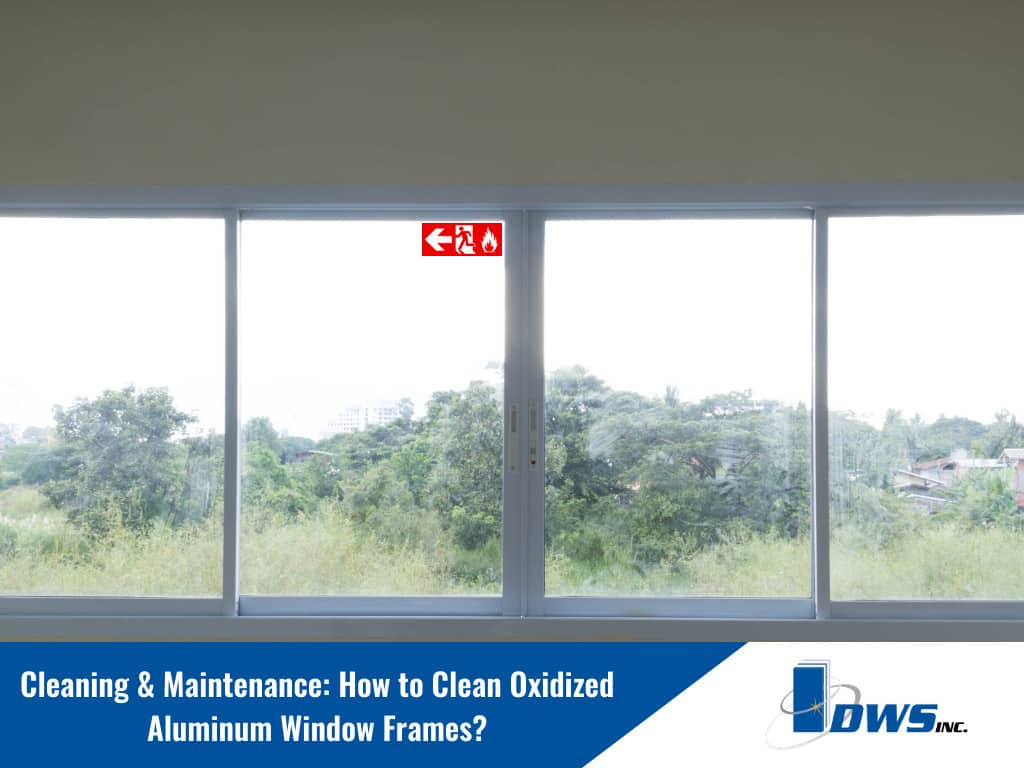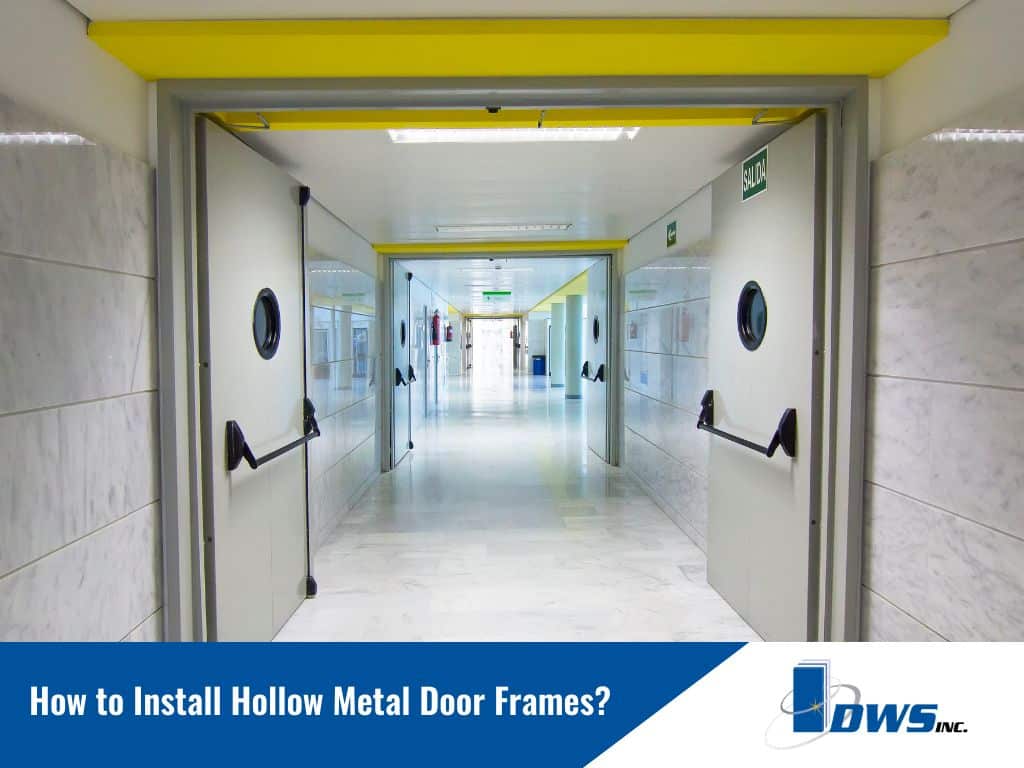What Are the Best Kinds of Fire Doors Out There?
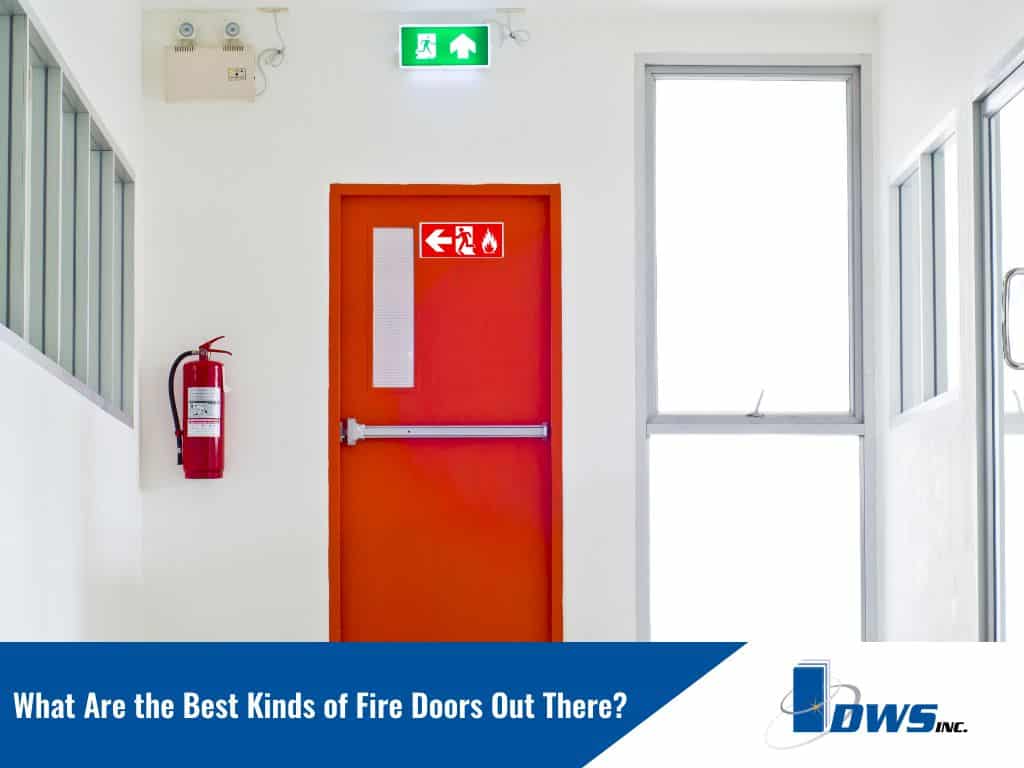
We typically assume that every building we step into is designed to optimize safety and meet specific protection standards. But unfortunately, this is not always true. Every year, thousands of homes and other structures are destroyed by fire, often because they do not have fire-resistant equipment or materials. Many of these tragic accidents could be avoided with the proper installation of fire-rated doors.
One reason that structural fires can be so destructive and deadly is that they quickly spread from the point of origin.
According to research from the National Fire Protection Association, many home fires that caused injury or death spread throughout the building. If the fire could be contained in one area, then these fatalities could have been avoided. The same is undoubtedly true for commercial buildings, as fires are likely to spread through hallways and into other rooms.
Fire-rated doors can help stop or slow a fire from spreading room to room since the material cannot catch fire. They can also help block smoke from extending throughout the building, making it much easier for people to evacuate safely.
Installing fire-rated doors and top-rated door closers can create a far safer building, particularly for rooms at higher risk of catching flame, like kitchens or rooms with electrical wiring that could spark.
But there are numerous types, styles, and features for these kinds of doors on the market – so which one is the best to get?
Let’s discuss this.
Sealed vs. Unsealed
To be most effective, a fire-rated door needs to create an air-tight seal once it is shut so the fire cannot grow, and the smoke remains enclosed. Some doors are designed to create this seal with any doorframe and do not require an additional edge-sealing application. These are known as Category A doors. These doors may feature gaskets or neoprene weather-strips that fit snuggly in the door frame to block airflow.
Category B doors have an applied intumescent material, a type of coating that expands with heat. This means that the seal will only be deployed once the room heats up to a set temperature, and the expansions create a pressurized closure.
Both of these fire-rated door types are equally effective. However, Category A style doors tend to be used more often since they require less upkeep. Category A doors do not need additional sealing materials to be added to either the door or the frame. Category B doors require an application of intumescent materials, such as a seal along the sides.
Fire-Resistance Ratings
Every fire rated door comes with a numbered rating, which equates to the number of minutes it can resist catching aflame. No fire-rated doors are completely fire resistant, but they are made from materials that are not highly flammable and will slow down the fire’s spread.
The most common fire-resistance ratings are:
- 20 min
- 45 min
- 60 min
- 90 min
- 180 min
Fire-rated doors have a letter rating instead of numbers. In this case:
– A equals three hours
– B is one to one-and-a-half hours
– C stands for 45 min
Now, fires spread extremely fast. An average-sized home can become completely engulfed in flames in just five minutes, leaving a tiny window of time for people to evacuate and call the fire department.
It would seem like choosing a longer-time rating for a fire-rated door would be the best choice. But you must consider the structure of the entire building. Although the door may be rated for 90 minutes, the room walls may not resist flames for that long – which results in a completely useless fire door. It is best to choose a fire rating consistent with the ratings of all materials in the building.
You should also consider the placement of the door. Three hour or 90-minute fire doors are best for openings, leading to escape routes, such as stairwells, elevators, or exits. Lower ratings can be used on doors to interior rooms, such as bedrooms, bathrooms, or offices.
UL and NFPA Standards
All fire-rated doors must meet specific standards that ensure the door is effective under various situations.
The first is the NFPA (National Fire Protection Association) 80 standard regulation, which regulates the maintenance and installation of fire protection materials, including walls, floors, ceilings, and doors. The materials used in buildings must meet the minimum standards, which includes:
- No breaks, cracks, or holes in the door or frame
- Secured door, frame, hinges, and hardware – which must be in working order with no damage
- Door clearances underneath must not exceed ¾,” and the top of the door’s opening must not exceed 1/8″
- Operational self-closing devices and latching or locking hardware must be operational
- No modifications may be made to the door after it is installed
Fire-rated doors must also meet UL (Underwriters Laboratories) 10C and NFPA 252 testing standards, ensuring that the door resists heat to 1925° F.
Fire doors are also rated to resist the pressure of a fire hose. This is to be sure it will not break once the fire department has arrived to put out the flames.
Deadbolt vs. Positive-Latching
The latching style on a fire-rated door is another essential factor to consider. All fire doors are required to have an active latch bolt attached. This lock has a spring latch, which automatically releases when the door is pressurized from the fire’s heat. This means that the door will automatically lock and stay sealed to prevent the fire from spreading.
Fire-rated doors may also have an additional deadbolt lock that can be manually enabled or disabled. It is a good idea to opt for a deadbolt if your fire doors lead to rooms or exits which need to be secured. However, a professional should install these deadbolts, as the drilling process can compromise the fire rating if it is done improperly. They must also be labeled with signage stating “THIS DOOR TO REMAIN UNLOCKED WHEN THIS SPACE IS OCCUPIED” must be visible nearby.
Having a deadbolt on a fire-rated door can be potentially dangerous – as it could trap people trying to escape or go through a door. Therefore, it is only recommended that deadbolts be included if necessary. It is also best that the lock can be unlatched from the inside without a key for added safety.
Fire Protective vs. Fire Resistive Glaze
Finally, you should understand the glazing types of fire-rated doors. Glazing may be a piece of tempered glass, laminated ceramic, or filmed wired glass installed into the fire-rated door. This is an optional feature, but it can be useful to have so that the interior room is visible when the door is shut.
There are two main types of glaze: fire protective and fire-resistive.
Fire protective glazing is limited to 100 square inches of the door, and the material is required to meet ASTM E-119. This ensures that the glazing can resist temperatures up to 250° F without cracking.
Fire resistive glazing is much stronger and is rated to endure temperatures up to 1925° F – and the sizing can exceed 100 square inches. Fire resistive glazing is marked with a “W.”
That being said, both options will offer protection as needed. However, since resistive glazing is designed to protect against higher temperatures and is allowed in larger pieces, it can be more expensive than fire protective glazing.
Conclusion
In the event of a fire, the risk of destruction, injury, and even death can be significantly reduced through the use of fire-rated doors.
But in addition to installing top-quality fire-rated doors, all buildings should be equipped with additional fire protection equipment, such as extinguishers, fire-resistant cabinets, and fire-rated access panels.
Here at DWS, we carry only the best commercial doors, frames, and hardware supplies to create a safer facility. Please reach out to our team today to receive a quote or learn more about fire-rated doors and other equipment we offer.

